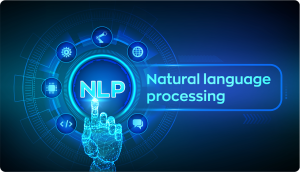
Introduction
Picture this: A couple finally finds their dream home. They’re thrilled, submit their mortgage application right away, and start planning their future. But just a few days later, the excitement fades. Their application is on hold, because one key document is missing, or a bank statement is outdated. Everything grinds to a stop over something that could’ve been caught early.
This kind of delay is more common than you would think. For mortgage processing, early-stage document verification is one of the most critical steps. Yet, it’s also one of the most manual, time-consuming, and error-prone parts of the journey.
Loan officers juggle hundreds of applications, each filled with documents in different formats, from scanned or photographed IDs to handwritten notes. Mistakes happen. Files go incomplete. And all too often, applications get stuck in limbo, frustrating everyone involved.
But here’s the good news: AI is changing the game. With intelligent automation, lenders can get the borrower documents verified right at the start, automatically spotting missing, mismatched, or outdated files before they reach the underwriting stage.
The result? Fewer delays. Cleaner submissions. And a mortgage process that finally keeps up with the speed and expectations of today’s borrowers.
Why Preliminary Document Verification Matters
Better Submission Quality = Faster Loan Processing
When it comes to mortgage applications, paperwork matters. If everything is submitted correctly the first time, like clear ID proof, recent income documents, and full bank statements, it sets the stage for a much smoother process.
Lenders don’t have to go back and forth asking for missing information or clarifying mismatched details. That means less time spent on emails and calls, and more time moving the application forward.
For borrowers, it’s less hassle and less waiting. In short, when the initial submission is complete and accurate, the whole process becomes faster and more efficient for everyone.
Preventing Common Application Gaps
Even the most experienced loan officers can miss things when working through a mountain of applications. Some of the most common document gaps include:
- Missing pay stubs or bank pages
- Expired ID proofs
- Unsigned consent forms
- Outdated tax returns
These gaps often get caught late in the process, which means lenders must go back to the borrower, causing delays and risking the deal. AI helps by automatically flagging these issues as soon as the documents are uploaded, before they’re submitted.
Risk Mitigation Right from the Start
Early document verification doesn’t just speed things up; it adds a layer of protection, too.
By carefully reviewing files like income statements, IDs, and tax returns at the beginning, you can catch issues beforehand. Inconsistencies like mismatched names, outdated documents, or conflicting financial details are easier to address when they’re found early in the process.
This upfront diligence helps prevent errors, reduce the chances of fraud, and increase confidence in the application. It sets the tone for a more secure and trustworthy lending process, right from the first step.

Challenges in Early-Stage Document Collection
Manual, Checklist-Based Reviews
Most traditional mortgage verification still depends on human checklists, and that comes with a lot of variation. What one loan officer considers complete, another might flag as incomplete.
These checklists are often:
- Inconsistent across teams or branches
- Not updated to reflect changing lender policies
- Dependent on memory and manual checks
AI takes out the guesswork. It applies the same rules every time, ensuring nothing is overlooked and everything meets the standards.
Managing Different Document Formats
Borrowers submit documents in all kinds of formats like scanned, photographed, handwritten, or digital PDFs. This inconsistency makes it tough to manually extract information accurately.
AI tools with OCR (Optical Character Recognition) can handle these formats with ease. They normalize the data, extract what’s important (like income amounts, account numbers, dates), and structure it for easy validation.
Example: Two bank statements from different banks might look completely different, but AI can still pull out and compare balances, income deposits, and payment patterns automatically.
Pressure of High Application Volumes
In a competitive housing market, lenders may deal with hundreds of applications per day. This creates pressure to process them quickly, which increases the risk of cutting corners on verification.
AI allows mortgage teams to scale without compromising quality. Instead of spending hours per file, AI can verify multiple files in seconds, ensuring every application gets the attention it deserves.
No Standardization Across Lender Requirements
Every lender has its own checklist of required documents and formatting preferences. This makes it tough for originators to remember what’s needed for whom.
AI can be trained with custom rules per lender, ensuring that every submission matches specific guidelines, reducing confusion, rejected files, and resubmission headaches.

The Real Cost of Incomplete or Inconsistent Files
A missing pay stub. A mismatched name on a bank statement. An unsigned consent form. These might seem like small issues, but when it comes to mortgage applications, they can cause big headaches.
Here’s what happens when early-stage document verification falls short:
Rejections, Rework, and a Lot of Backtracking
Lenders frequently return files that are incomplete or poorly structured, triggering unnecessary rework and dragging out the loan process. This back-and-forth not only wastes time but also strains internal teams who are already juggling high volumes.
AI can help catch these issues before submission, reducing friction and improving the chances of getting it right the first time.
Delays That Drag Everyone Down
When key documents are missing or formatted incorrectly, underwriters can’t move forward. Everything stalls. The borrower’s timeline stretches. The lender’s operations get backed up. And potential revenue is delayed.
With AI doing the heavy lifting upfront, review cycles shrink dramatically, keeping the momentum going.
Poor Borrower Experience
Nobody enjoys being asked for a document more than once. It creates friction and frustration, especially for borrowers who thought they’d already done everything right. Every extra email or call asking for corrections chips away at the borrower’s trust. And once that trust is gone, it’s hard to win back.
When AI handles document validation early, borrowers are only contacted when truly necessary resulting in better communication, faster decisions, and more trust.
Lost Deals in Competitive Markets
In fast-paced lending environments, time is everything. If the verification process takes too long, the borrower may choose another option that moves faster.
AI helps keep your process sharp and competitive, allowing you to respond quickly and accurately.

What Can AI Really Do in Preliminary Document Verification?
Here’s a breakdown of how AI enhances early-stage document checks in mortgage applications:
Auto-Validation of Standard Documents
AI systems can scan uploaded files and confirm the presence (and validity) of:
- Government-issued IDs (driver’s licenses, passports)
- Income proofs (pay stubs, W-2s, 1099s)
- Bank statements
- Tax returns
- Purchase agreement
- Signed disclosures
The system flags anything that’s missing, outdated, unreadable, or suspicious.
OCR + Smart Data Matching
AI doesn’t just “look” at documents, it reads them. With OCR and intelligent parsing, AI can:
- Extract key details like name, address, employer, income
- Cross-check those values across multiple documents
- Spot inconsistencies (e.g., different income amounts on pay stub vs. tax return)
This adds a layer of precision that manual checks can easily miss.
Built-In Fraud Detection
Fraud is a growing concern in the lending world. AI can help detect:
- Duplicate documents submitted across different applications
- Photoshopped or manipulated files
- Identity mismatches (e.g., someone submitting documents not belonging to them)
Catching fraud at this stage can help avoid costly legal and financial risks later on.
Tailored Rules Per Lender
Different lenders = different requirements.
AI can be configured with custom checklists per lender, so your team doesn’t have to memorize or cross-reference changing requirements. This ensures every file is ready for submission, no matter the destination.
Conclusion: Smarter Leads to Smoother Closings
Mortgage processing is complex, and early-stage document verification plays a huge role in how smooth or stressful the experience becomes.
Manual reviews are simply too slow, too inconsistent, and too prone to error. With AI, you can transform this critical early step into a fast, accurate, and reliable process.
Here’s what AI brings to the table:
- Reduces missing and incorrect documents
- Shortens approval timelines
- Prevents fraud before it happens
- Adapts to each lender’s specific needs
- Enhances borrower satisfaction
In a world where speed, trust, and precision matter, automating document verification is no longer a luxury, it’s a strategic necessity.
Stop Chasing Paper. Start Automating.
Ready to transform your document verification process? Let’s talk about how AI can streamline your mortgage pipeline.









